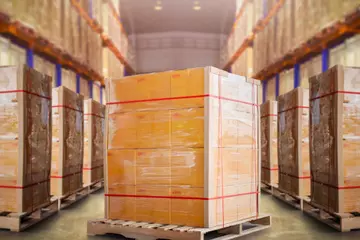What influences LTL costs?
Less-than-truckload (LTL) shipping is a cost-effective way to move freight without requiring a full trailer. However, LTL pricing can be complex, with multiple factors affecting the final cost. Whether you're new to LTL shipping or looking to understand rates better, this guide will break down the different pricing elements to help you make an informed decision about your freight.
Key factors that impact LTL rates
The following details help determine LTL freight costs:
Freight class
Set by the National Motor Freight Traffic Association (NMFTA), freight classes are shipping categories based on the National Motor Freight Classification (NMFC) System. The categories are based on factors like weight, density, handling ease, liability and stowability. Typically, a lower class results in lower shipping costs.
Weight
Most traditional LTL pricing structures use the weight of a shipment as a primary factor to determine the price. Heavier shipments take up move of the capacity on the trailer, can impact fuel consumption and may require specialized handling or equipment — all of which can add to your rate.
Dimensions
The size of a shipment — including its length, width and height — will affect your quote. Generally, the more space a shipment takes up on the trailer, the higher the cost. Shipments with one dimension longer than 8 feet also can trigger additional fees, such as an over-dimensional freight charge. Dimensions are also how you find the cubic footage of your load, which may play a role in pricing.
Packaging
Well-packaged freight is easier to handle, less likely to be damaged and generally cheaper to move. Shipments with odd dimensions, that are not palletized or that are otherwise difficult to load into a trailer will typically be more expensive.
Lane
As you might expect, freight charges generally increase as the distance traveled increases. But distance alone doesn’t determine the cost. Some shipping routes (or “lanes”) are cheaper than others, even if they cover the same mileage. If more freight is moving into a market than out of it (or vice versa), it creates an imbalance. Carriers often adjust pricing to help balance different markets.
Accessorial charges
Accessorial charges are fees for additional services and requirements that are beyond a standard LTL shipment. Some examples include residential delivery, liftgate service and inside delivery.
Fuel prices
Carriers may apply a fuel surcharge that fluctuates based on the current price of fuel. The fuel surcharge for LTL is typically based on a percentage of the linehaul, not a dollar amount per mile.
Market conditions
LTL pricing will be influenced by market demand, capacity and seasonality. Rates may be higher during peak shipping seasons or times of increased demand. However, market conditions will not affect your LTL pricing on a day-to-day basis if you have previously negotiated rates or published pricing in place.
Service level required
Any other service that requires additional handling or specialized equipment can affect the cost. This includes things like time-sensitive delivery options and hazardous material handling.
Ready to check rates for your shipment? Get a quote today.
The role of different pricing models
LTL pricing isn’t one-size-fits-all. Some shipments are billed based on tariff rates (standardized carrier pricing), while others are calculated using contracted rates (negotiated agreements between shippers and carriers). More recently, dynamic pricing has emerged, where rates fluctuate based on real-time market conditions.
Each option has its pros and cons, and many shippers find that using a combination of models is the right approach. See when each one makes sense and how to balance LTL pricing options.
Tips for getting the best LTL rate
While some pricing factors are outside of your control, there are still things you can do to protect your bottom line.
-
Be upfront and accurate. Honesty at every stage helps carriers find the best solution for your business. Talk to them about the services you need and provide accurate timelines, shipment details and contact information. The more you share, the better your experience will be.
-
Know what you can negotiate. Things like accessorial fees and pricing structures can often be adjusted to build a price best suited for your business. Use this guide to improve conversations with LTL carriers.
-
Consider more than the initial cost. Choosing the lowest rate may not always be the cheapest option long term. Unexpected costs can quickly add up if you don’t consider factors like on-time performance, potential for damage and safety. Not sure what to watch for? These factors matter when selecting an LTL provider.
An LTL RFP can reveal many of these details. Use these tips to ensure you’re asking the right questions. -
Understand alternative options. Sometimes, the best rate can be found by using a different transportation mode. For example, many volume shippers find that full truckload can be more cost-effective. Compare those options here.
Get a quote and start shipping
LTL pricing can be complex, but the right partner can help you navigate it easily. ArcBest offers transparent rates, flexible options and a range of services designed to fit your needs. Our experts are here to help you understand the ins and outs of LTL shipping, ensuring you get the best value for your freight.
Ready to see how we can help? Explore our LTL services or get a customized quote to start shipping with our nationwide network.






